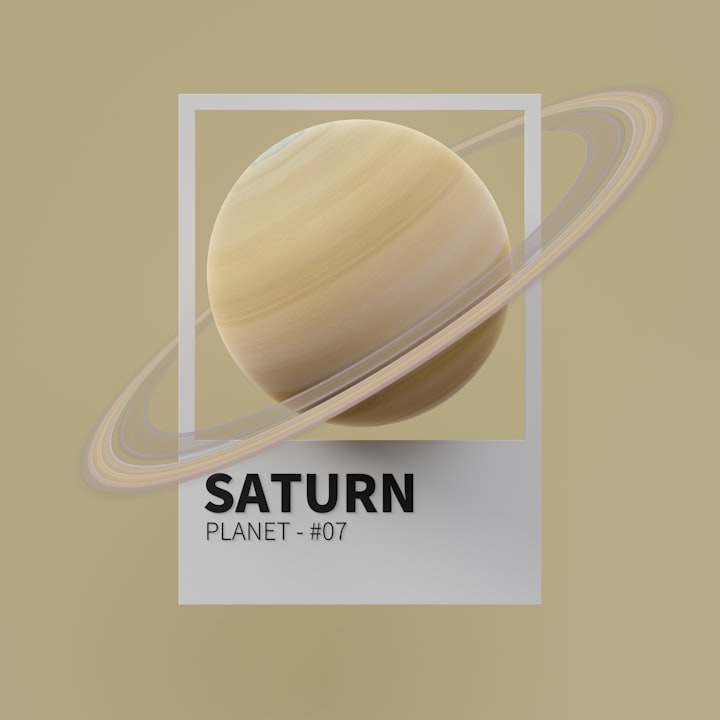The Disappearance Of Saturn's Rings
By: Jason Morton
The Planet Saturn
Saturn is the sixth planet in our system, and it’s the second-largest planet behind Jupiter. Much like Jupiter, Saturn is a massive ball formed mostly of hydrogen and helium. With its’ dozens of moons, it’s still the rings of Saturn that have given the planet its iconic look as we’ve studied the stars and our solar system.
Saturn is known going back to ancient times and is the furthest planet away from Earth to have been discovered without the aid of telescopes and technology. It was discovered with the naked eye and rudimentary tools. As a planet, Saturn was named for the Roman god of agriculture and wealth, and the god that was the father of Jupiter.
From jets of water that spray from Saturn’s moon Enceladus to the methane lakes of the smoggy moon of Titan, the planet and its immediate system are a rich source of information and discovery, holding many mysteries to be solved.
It’s Saturn’s moons that could hold the potential life near Saturn. It wouldn’t be life as we know it, but on the moons of Titan and Enceladus, where there are known to be internal oceans, these environments could support life.

Saturns Rings Are Disappearing
NASA research confirms that the planet is losing its iconic rings. Estimates that have been made from observations sent from Voyager 1, and Voyager 2, were used to discover that the rings are being pulled into Saturn. Saturn’s gravity is pulling in the rings as a dusty rain of ice particles under the influence of Saturn's magnetic field.
“We estimate that this ‘ring rain’ drains an amount of water products that could fill an Olympic-sized swimming pool from Saturn’s rings in half an hour.”
— James O’Donoghue, NASA’s Goddard Space Flight Center
This alone means the disappearance of the entire ring system. The Cassini spacecraft measured ring material detected falling into the equator of Saturn and from there they estimated the rings have less time than originally thought.
The first hints of the rings disappearing came from Voyager observing peculiar variations in the electrically charged upper atmosphere of Saturn, density variations in the rings, and a trio of dark, narrow bands, circling the planet at the northern mid-latitudes.
In 1986, Jack Connerney of NASA published a study that linked the narrow bands to the shape of Saturn’s enormous magnetic field, proposing that electrically charged particles of ice were flowing down invisible lines in the magnetic field and dumping water in Saturn’s upper atmosphere. He proposed the influx of water washed away the stratospheric haze and made it appear dark in reflected light, producing the bands captured in the Voyager images.

There’s been a long-standing question about Saturns’ rings in the scientific community. Were the rings formed with the planet or from something that happened later in the planets’ life? NASA’s new research favors the theories that the rings were formed after the planet's formation, as the rings are only believed to be 100 million years old.
“We are lucky to be around to see Saturn’s ring system,”
— James O’Donoghue
Various theories have been postulated about the origin of Saturn’s rings. The rings could have formed when small, icy moons in orbit around the planet collided. Their orbits could have been perturbed by a gravitational effect of a passing asteroid or comet.
Saturn Losing Its Rings At “Worst-Case-Scenario” Rate
What does NASA define as a rate of worst-case scenario? Well, we’ll have plenty of time to try and enjoy Saturn's rings. If your kids or grandkids incline on becoming astronauts, they could even beam you back pictures one day.
Saturns rings are likely going to take about 100 million years to completely disappear from view. That’s longer than any of us have, so we’re going to continue to enjoy the view of Saturn’s majestic rings in NASA images, movies, and sci-fi productions for a long time to come.

Conclusion
It’s interesting to think that someday, the planet Saturn, will appear different to people as they travel through the stars. Our distant ancestors will learn about Saturn from a different perspective than you and I had on the iconic planet. Before that time comes, NASA will no doubt study Saturn and its’ moons much more in-depth than they have up to this point. What they might learn could be astonishing and eventually, gas giants like Saturn and Pluto may hold keys to replenishing the resources of this world.
Reference:
NASA.gov
https://www.nasa.gov/press-release/goddard/2018/ring-rain
About the Creator
Jason Ray Morton
I have always enjoyed writing and exploring new ideas, new beliefs, and the dreams that rattle around inside my head. I have enjoyed the current state of science, human progress, fantasy and existence and write about them when I can.
Reader insights
Outstanding
Excellent work. Looking forward to reading more!
Top insights
Compelling and original writing
Creative use of language & vocab
Easy to read and follow
Well-structured & engaging content
Eye opening
Niche topic & fresh perspectives
Masterful proofreading
Zero grammar & spelling mistakes
On-point and relevant
Writing reflected the title & theme







Comments
There are no comments for this story
Be the first to respond and start the conversation.